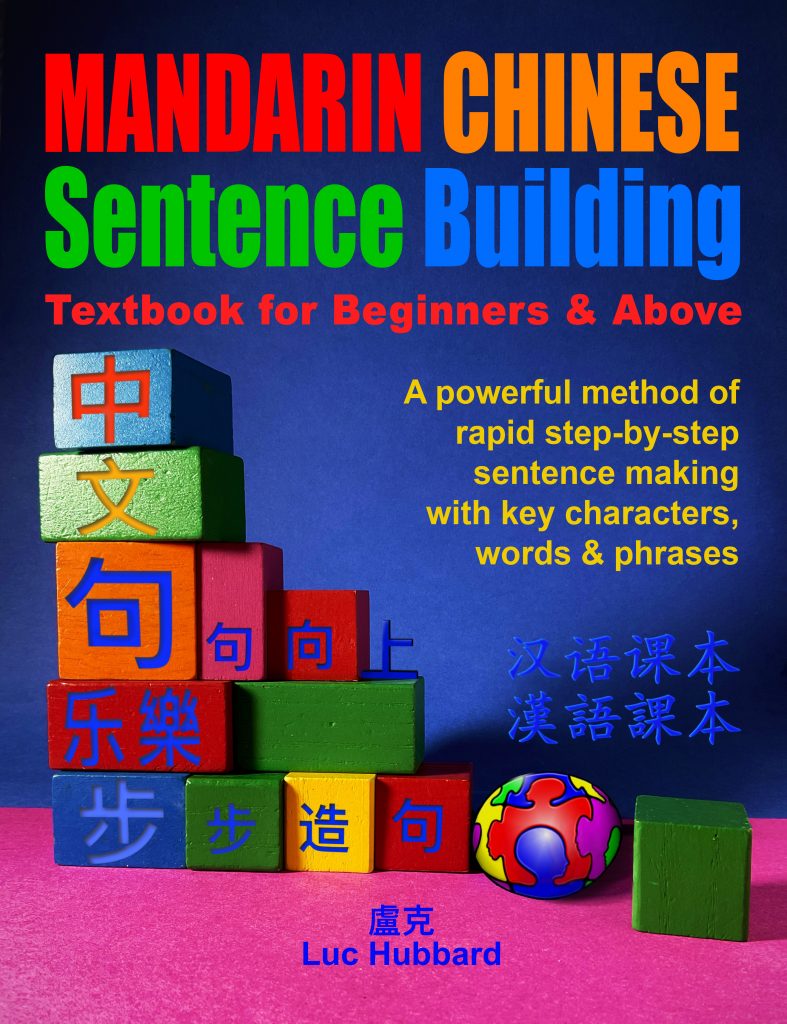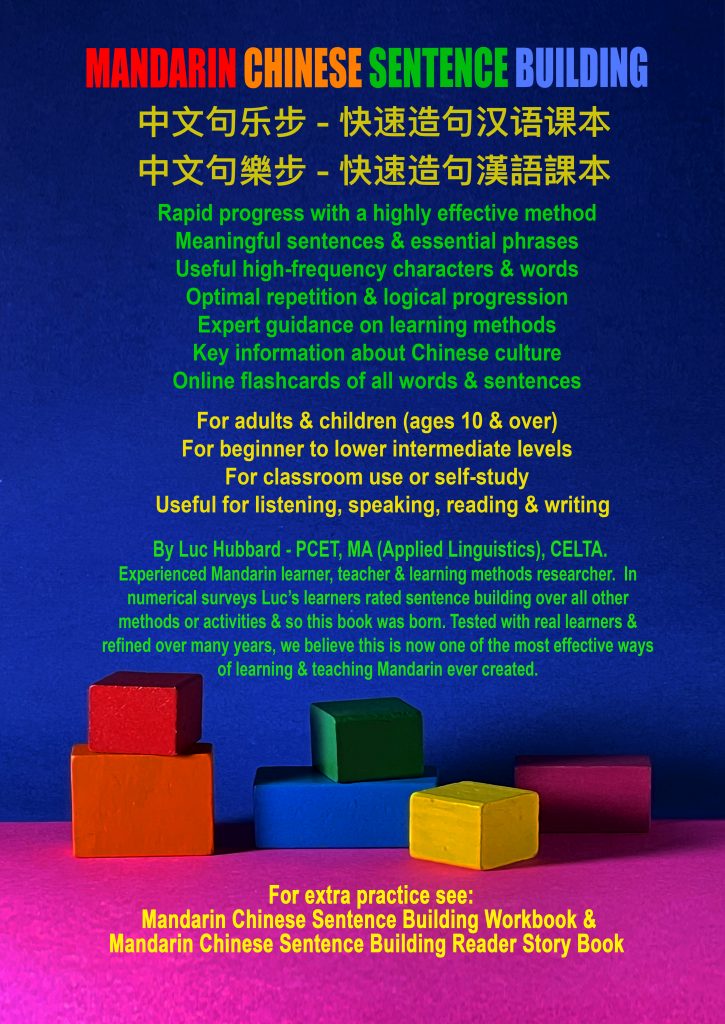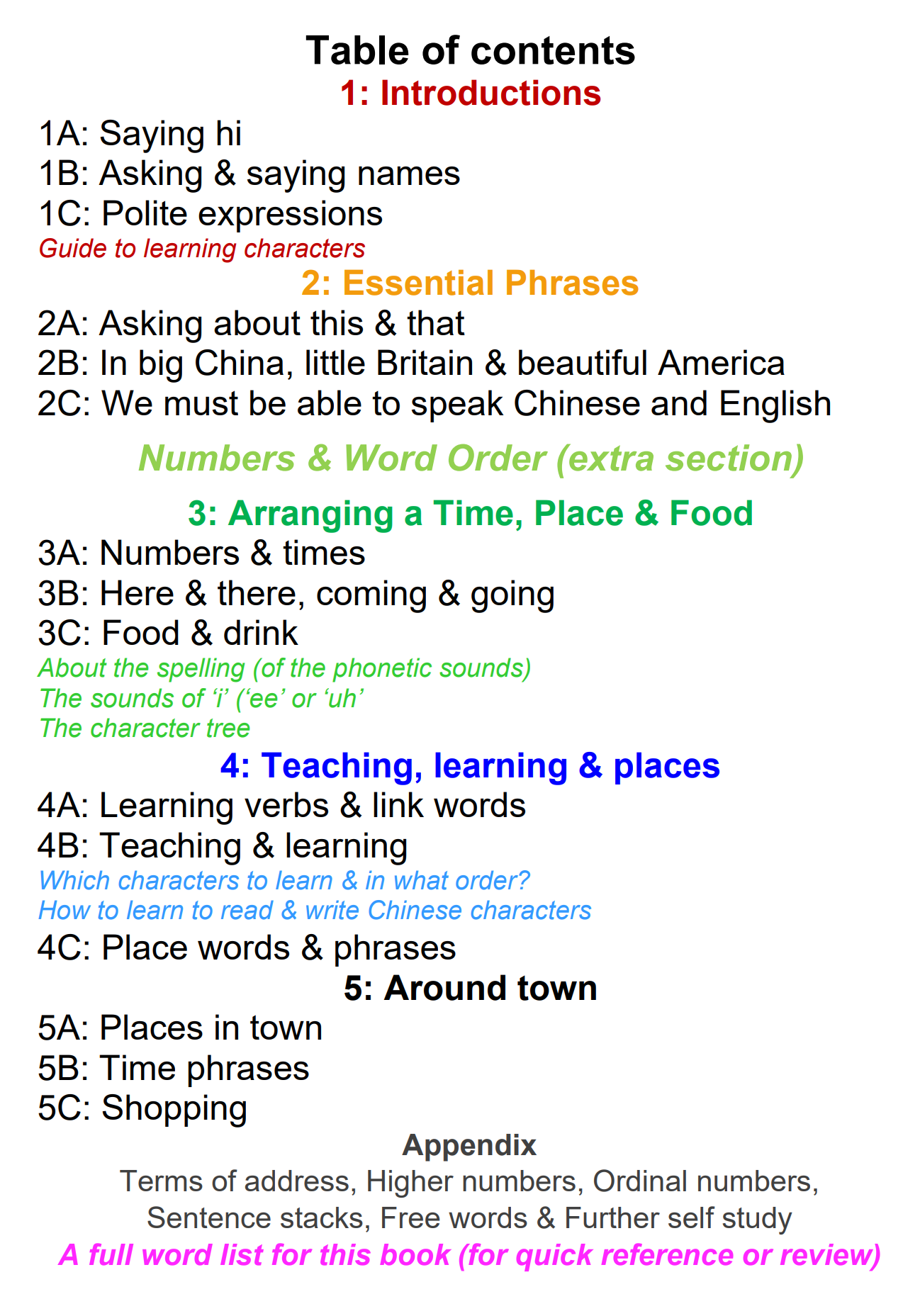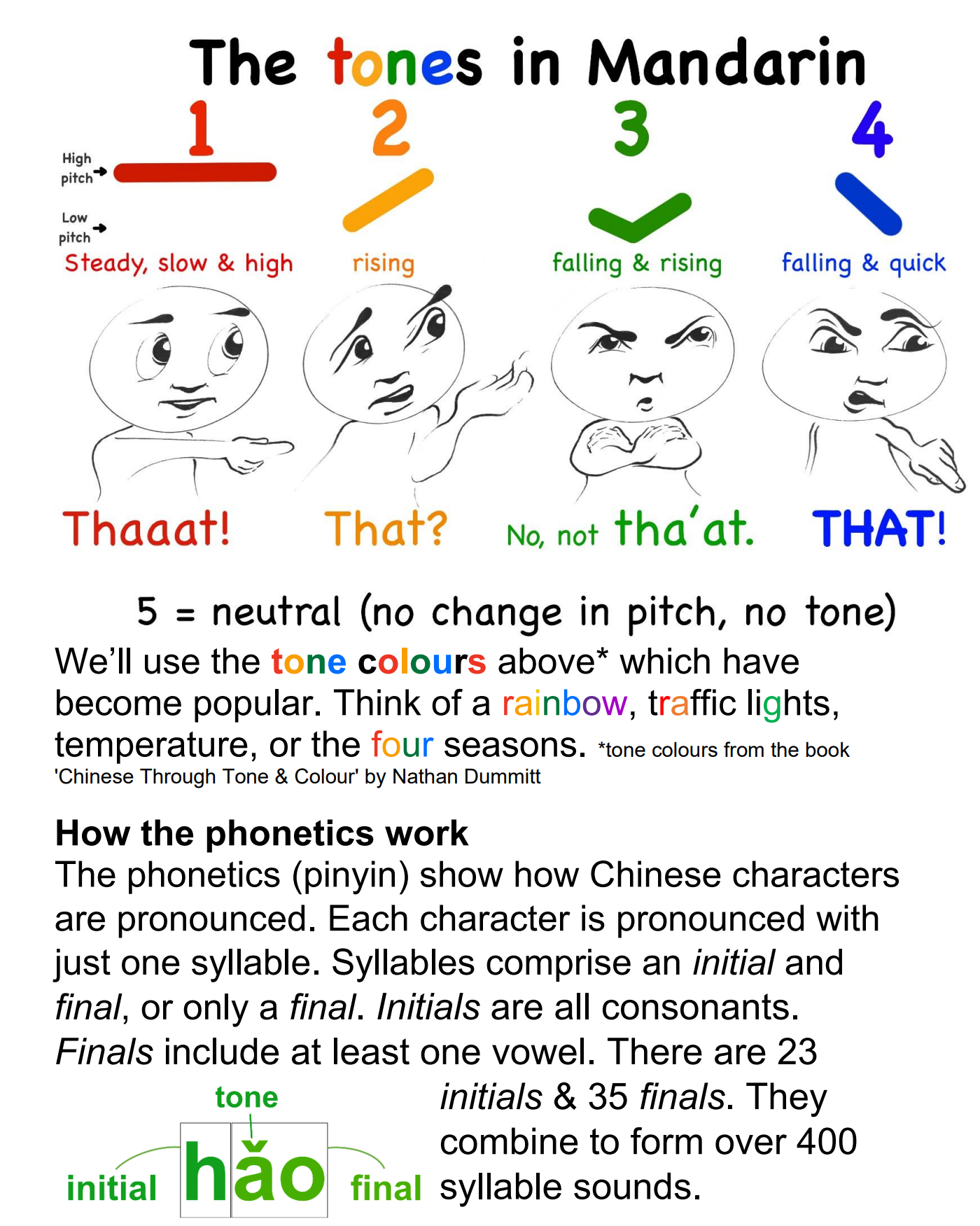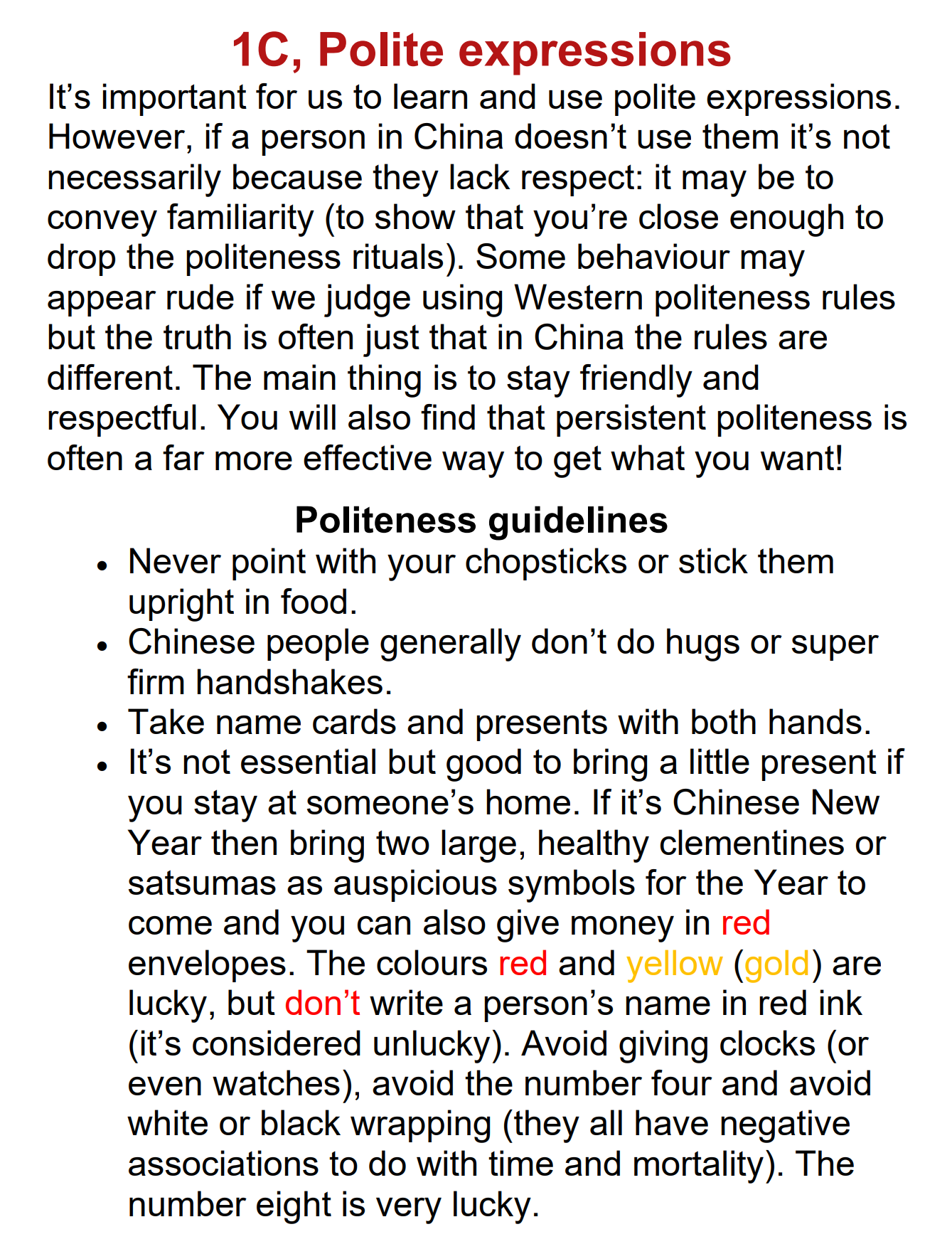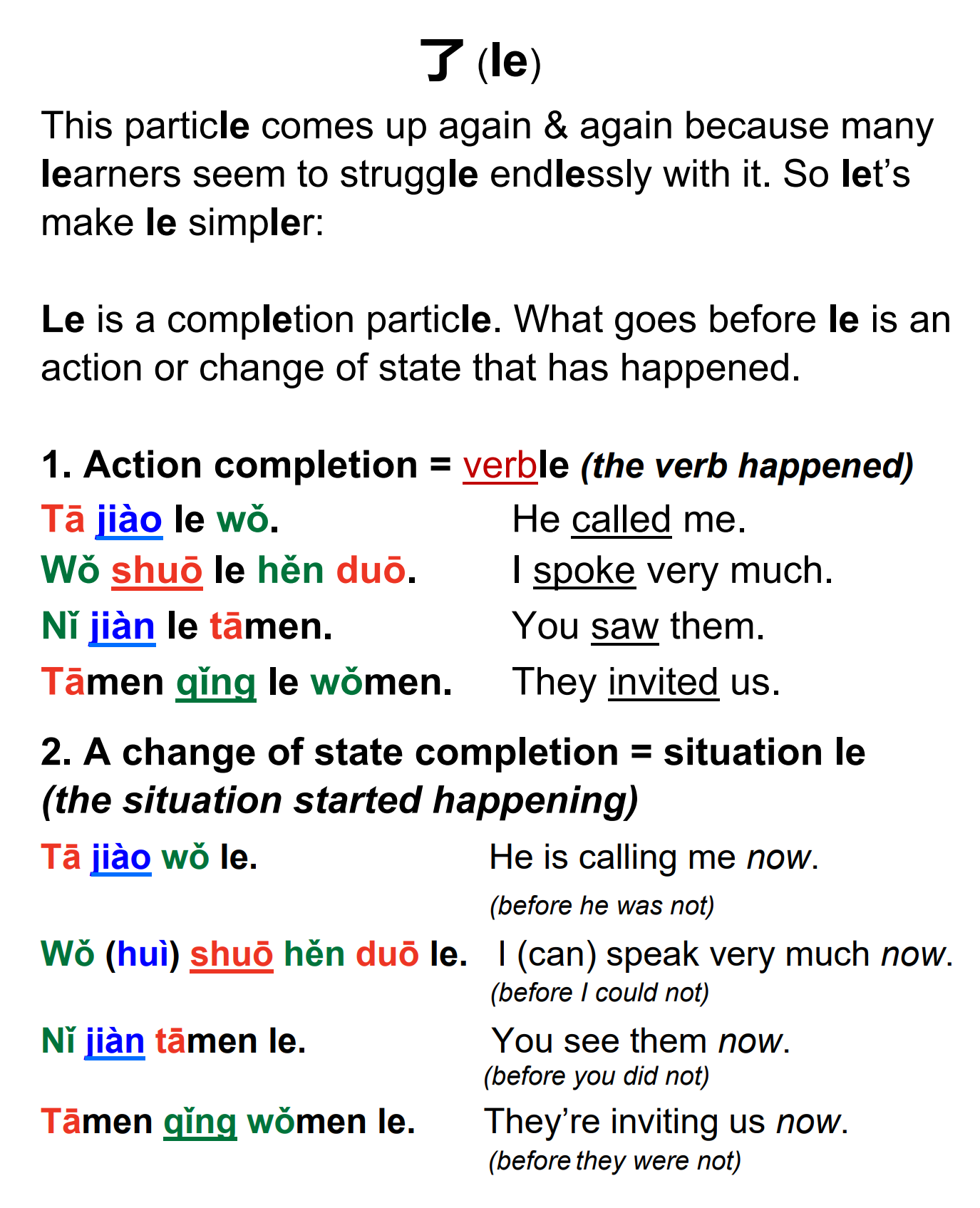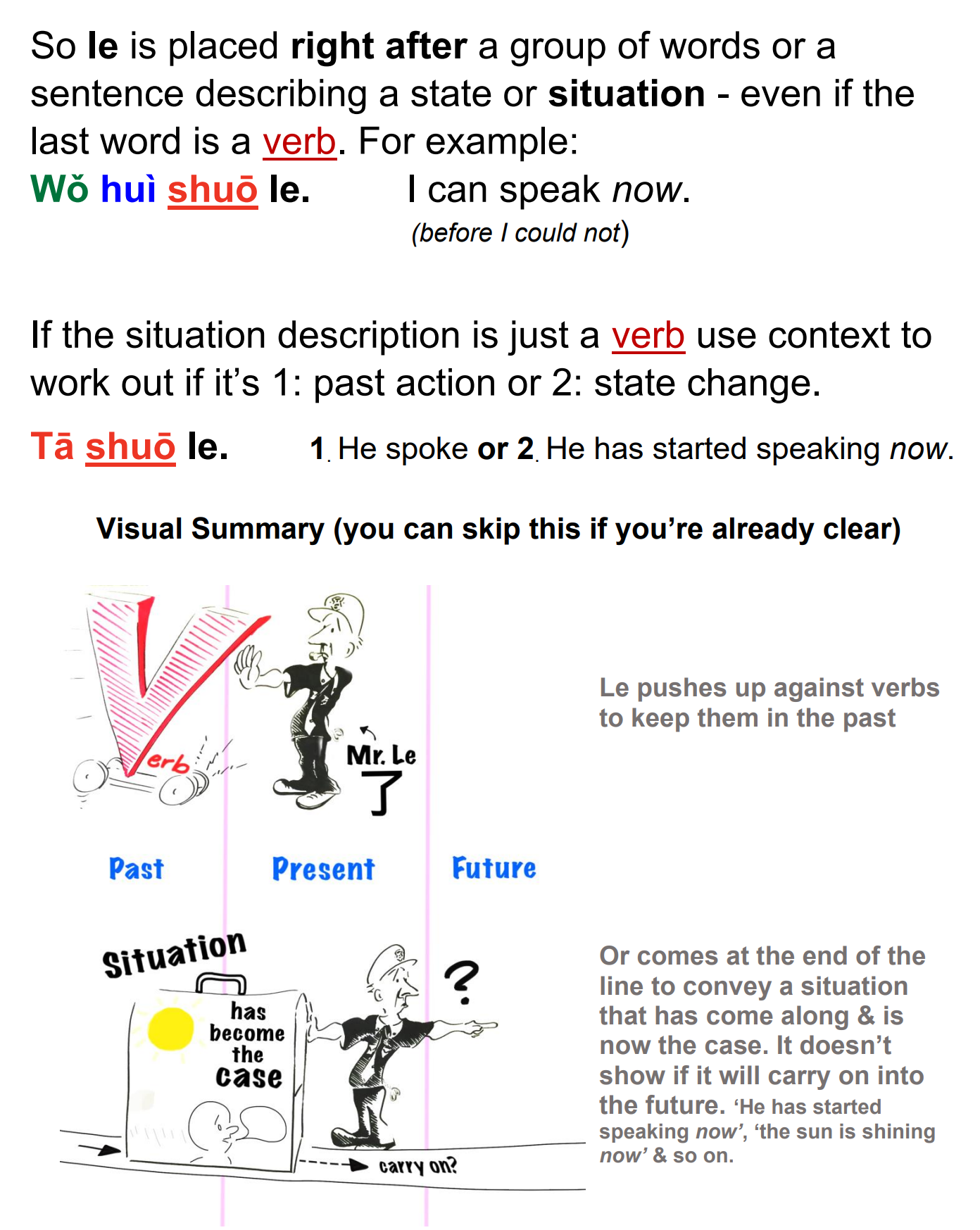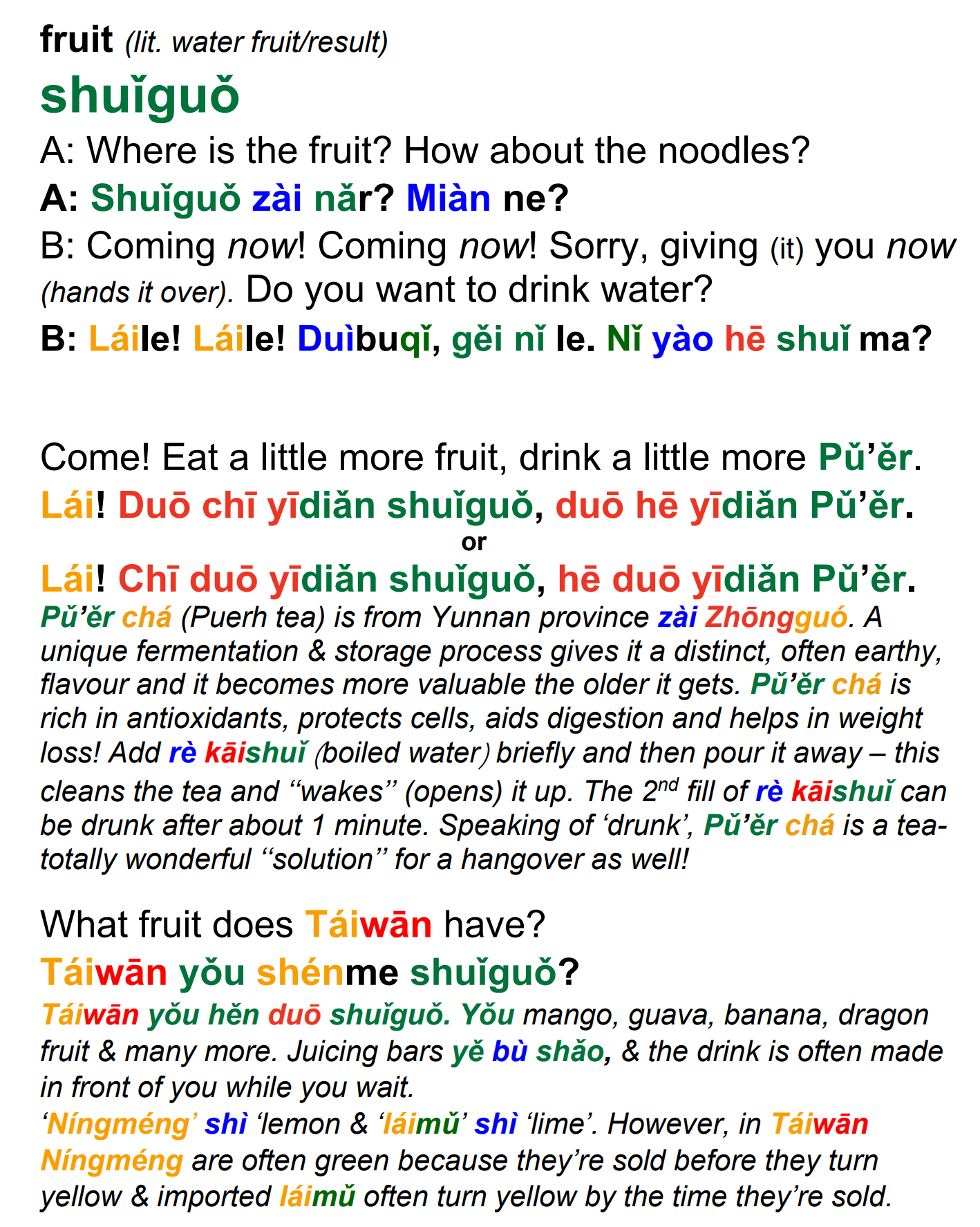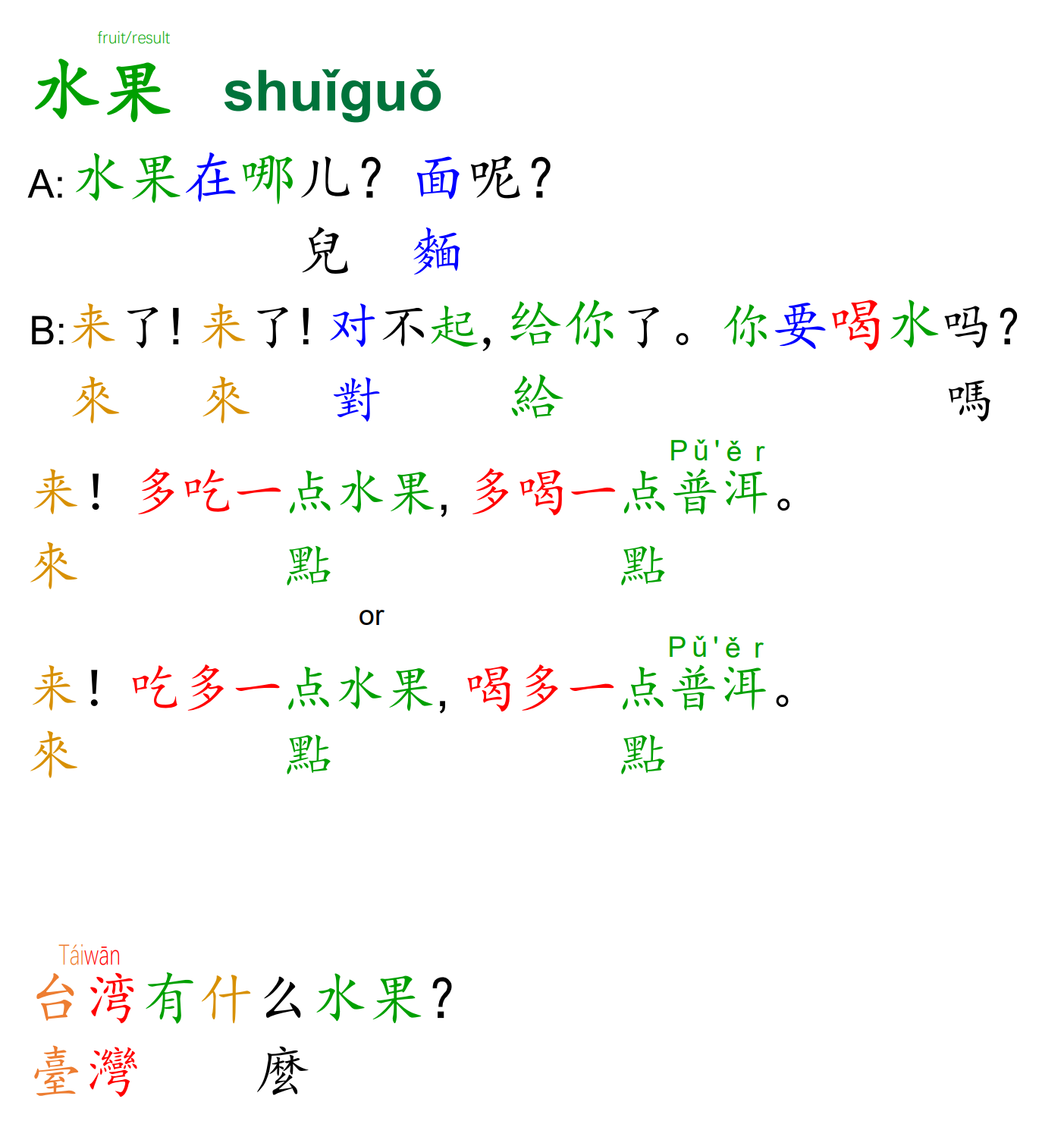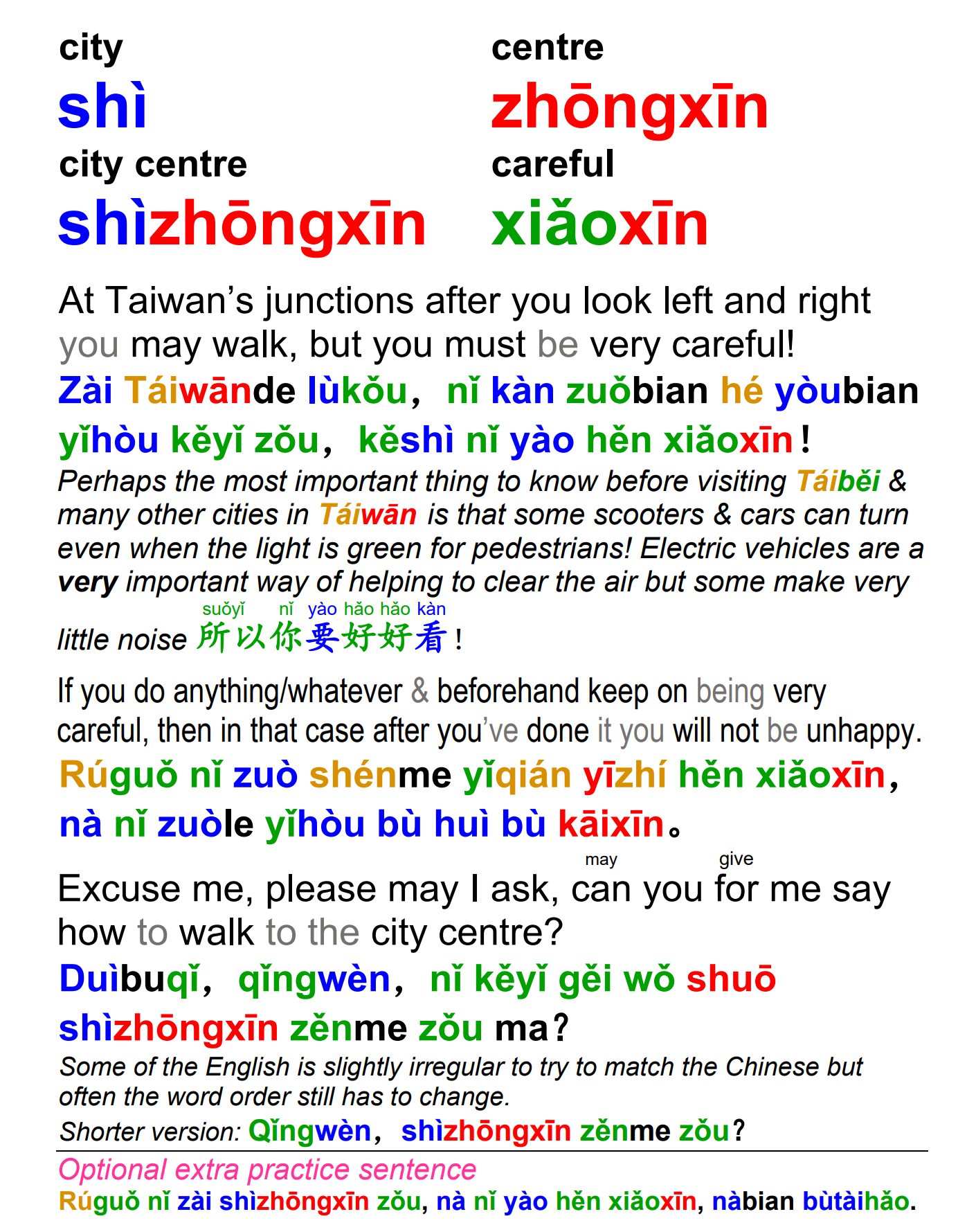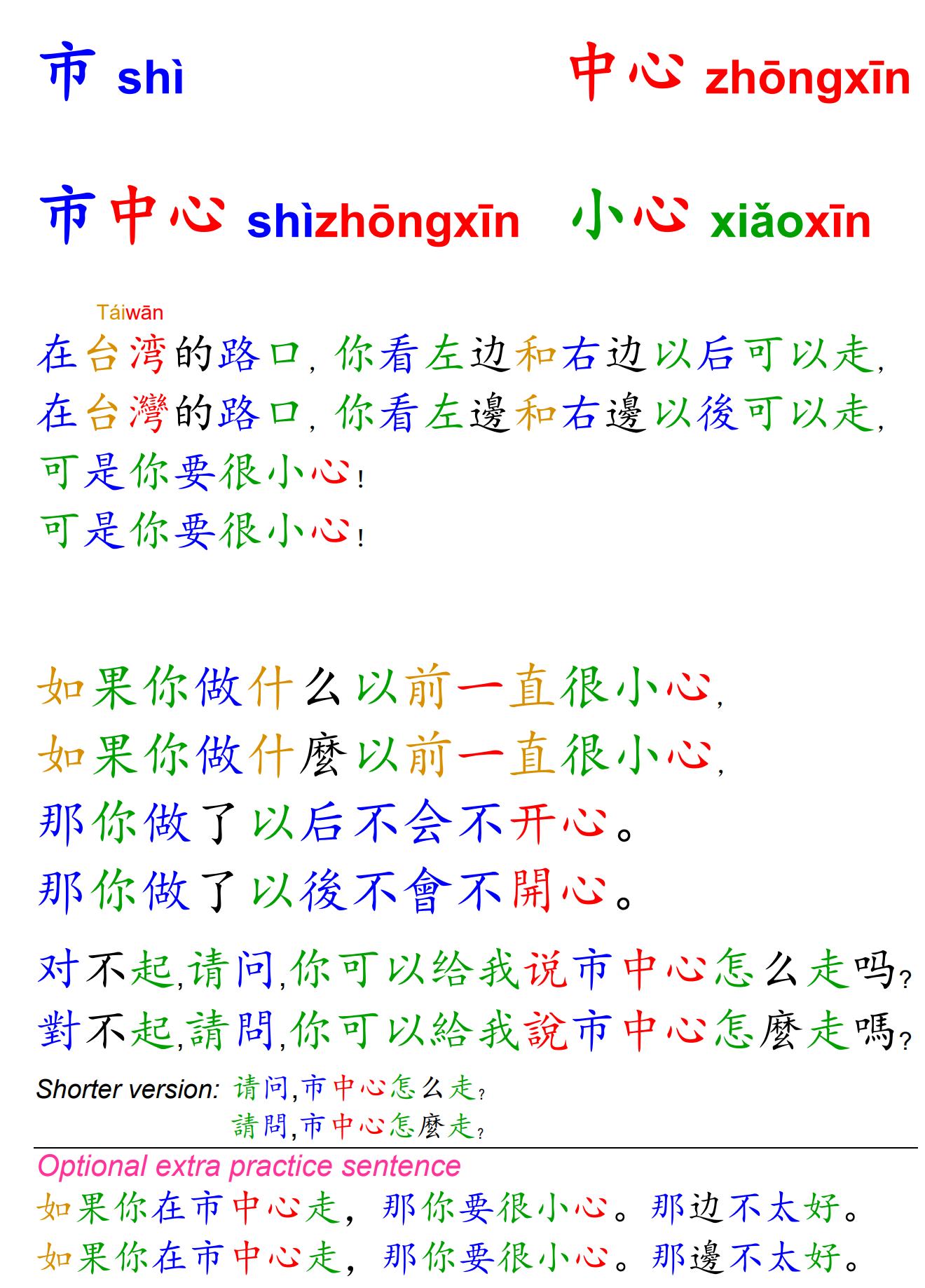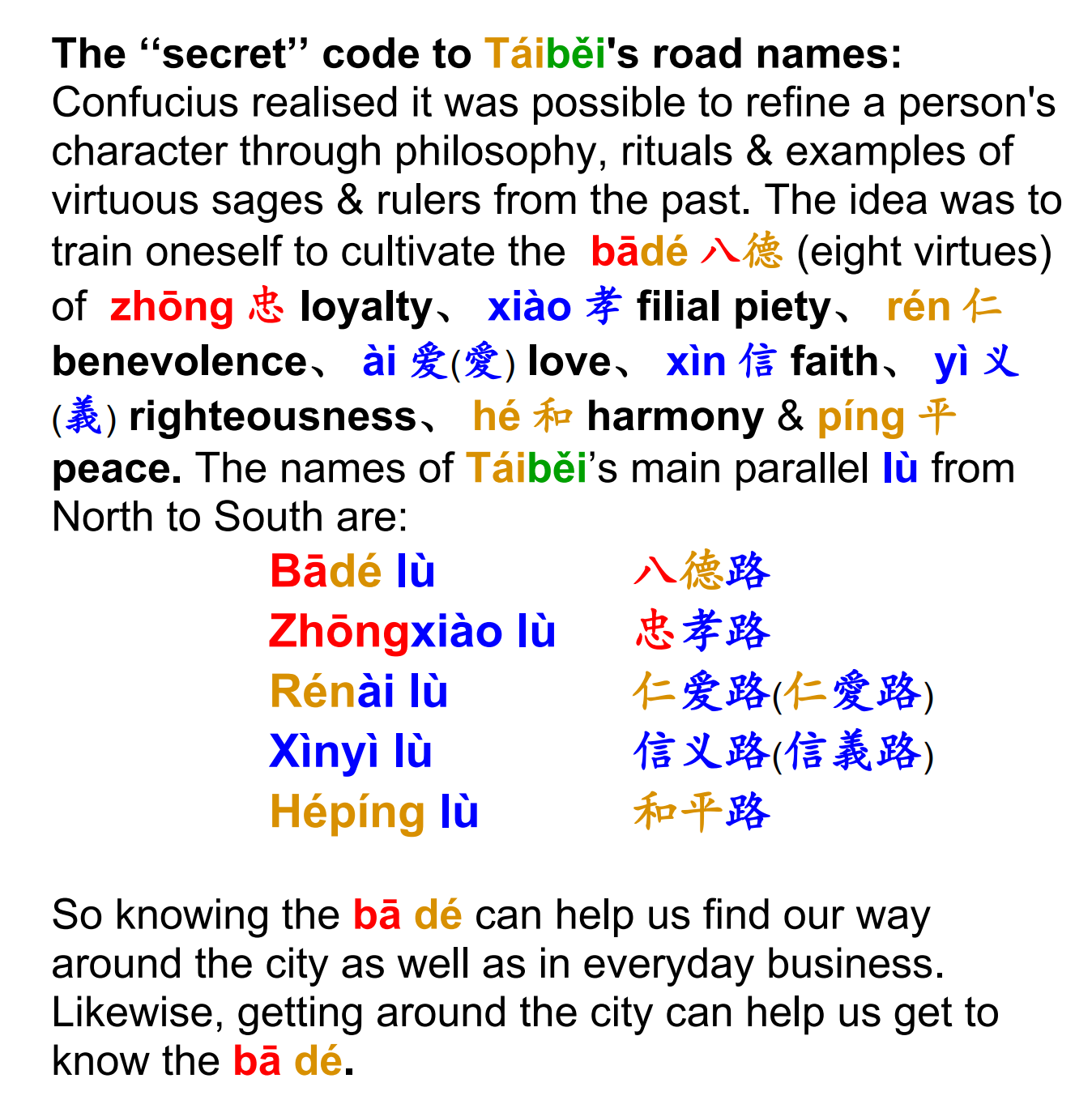老师的课堂上使用MCSB指南 (繁體版本在這兒)
The book can be used for in-class or online teaching and for self study also. Originally I made a series of materials based on the Michel Thomas method and when learners rated these materials higher than anything else we were doing in lessons I expanded on them and slowly the book naturally took shape. Over several years of teaching from the book I refined my method to what is shown below but feel free to adapt.
本书可用于课堂教学、在线教学,也适合学生自学。我最初创作了一套基于 Michel Thomas 方法的教材,后来学生给予这些教材的评价远高于其他课堂内容,于是我进一步扩展,慢慢地这本书自然而然地成形了。经过好几年用本书来教课,我就调整我教课的方法最终形成如下所示的方式。但您可以自行调整。
For each section there are two steps: spoken translation and character reading.
学每一段需要经过两个步骤:口译与认字。
Step 1: spoken translation (speaking practice)
第一个步骤:口译 (口语练习)
Summary: Students learn the spoken pronunciations and practise saying the words out loud in sentences. Teacher says English and learners translate into Mandarin Chinese.
总结:学生学正确的发音也练习在句子中运用这些词汇。老师说英文,学生翻成中文。
There is a powerpoint for each section that you as teacher can use in class. New words are shown in a large font on screen as teacher models the correct pronunciations. These words stay on screen as they are used in sentences. Teacher picks up the paper book and says the English, then students translate into Mandarin Chinese. This can be done one word at a time or one sentence at a time.
每一个部分(单元)有配套的PowerPoint供老师授课用。生词在荧幕上,也用特别大的字体,同时老师提供正确的发音。这些生词用来造句时还在荧幕上。老师拿起印刷版的书把英文说出来,让学生翻成汉语。可以逐词翻译,也可以逐句翻译。
Each word or set of words appears in some sentences on that page of the book. The final sentence of each word set is shown on screen and learners translate the whole thing into Mandarin. Small sub-groups or pairs can work together when doing this. Learners can also write the pinyin phonetics and for this mini whiteboards are a fantastic formative assessment tool! Once learners say or show their Mandarin translations teacher shows the next slide with the Mandarin Chinese translation on. Allow learners to review and amend as need be.
本页的生词都会出现在本页的句子里,每组生词的最后一句英文翻译会出现在荧幕上,让学生把整个句子翻译成中文。这时,学生可以在小组或者两个人一组一起合作。学生也可以把拼音写下来,用小白板是个极好的形成性评量工具!当学生分享他们的中文翻译以后,老师给他们看下一个幻灯片包括正确的中文翻译。按照学生的需要让他们复习和修改。
Following this more new words are shown in a large font and the process repeats. In this way learners only learn new words once familiar with the previous ones. It’s a bit like only picking up new building blocks once familiar with the building blocks you already have, and you constantly keep playing with them, trying new combinations as you build.
接着有更多的生词然后重复上面的过程。 这样学生把以前的生词学好才会学到更多的生词。这就像先熟悉已有的积木,再去拿新的积木, 也不断地尝试不同的组合,边玩边建造。
Step 2: character reading
第二个步骤:认字
Summary: Learners go over the same section but this time they must read the characters.
总结:学生再学一次那个部分(单元)可这次要认字。
First let learners take a moment to learn the shape of the new character or the component radicals and link it to the meaning and sound which they learned earlier in step 1. Then they read the sentences composed of characters aloud and translate into English. Teacher can also provide 80 to 90% of the translation and learners complete the translation. Teacher reads out the Mandarin again and learners listen to help reinforce the spoken sounds. Think of RTL: Read, Translate, Listen.
首先让学生把字的形状或部首跟意思和发音连接在一起。第一步骤时他们已经学过意思和发音。 然后他们念句子,这些句子都是中文字。接着要翻译成英文。老师也可以提供百分之80或90的英文翻译,让学生说一两英文词就完成翻译。老师要再念一次,同时学生聆听加强/改善他们的发音。可以想RTL: Read (念), Translate(翻译), Listen(听).
For self-study or small face-to-face private classes, learners can use the paper book reading the right hand pages of characters referring to the left pages to check.
为了自学或在小组面对面课程中,学生可以用本书印刷的版本朗读右边页的中文字,并参考左边页的内容进行对照。
In group classes or if doing online teaching then my favourite way of doing step 2 is using notability on the iPad. Notability allows the teacher to manipulate the PDF on screen easily adding marks and ticks and so on. For example, in the Notability file the last sentence in each set has phonetics above the characters but the phonetics are covered. The teacher can reveal the phonetics instantly by erasing the covering ink.
在团体班或在线课程中,我最喜欢的方法是用iPad的Notability. Notability 让老师很容易地操作荧幕上的PDF,画一些迹,勾等等。在Notability 的文件里,每一套最后一句上面有拼音,可拼音是盖起来的。老师就可以用橡皮立即擦掉上面的笔迹,显示正确的发音给学生看。
It’s often good to read aloud the first sentences together and translate together, then allocate the reading and translation of the final sentence in each set to a sub-group or learner. Or with the final sentence in the set learners can write down the phonetic sounds. They can work in cooperative learning sub-groups and use mini whiteboards when doing this.
常常可以把前面的句子一起念出来,一起翻译,然后把最后一句给小组或一位学生来念出来翻译。另外一个方法就是让学生把每组最后一句的拼音写下来。 学生可以在合作学习的小组中工作,并在此过程中使用小白板。
Review
复习
After completing a section, whether step 1 or 2, teacher may wish to review through workbook activities or Quizlet. My learners often adore the Quizlet match game for this!
无论是第一步骤还是第二步骤,单元完成了以后老师可以用练习本或Quizlet让学生复习。我学生特别喜欢用Quizlet Match game 复习!
Resources
资源
All the materials mentioned above are provided below for free download. If you need any help or would like to do a quick online workshop looking at how to use the resources in class then feel free to get in touch with me at [email protected] or via 07779130966 (on whatsapp).
上述所提到的数据都可以在下面免费下载。如果您需要任何什么帮助或想参加一堂很短的线上的练习班/工作坊,那就欢迎您用[email protected] 或者07779130966(在Whatsapp)和我联系!
PowerPoints for step 1(步骤1的PowerPoint): MCSB PRESENTATIONS
The character reading documents for step 2(步骤2的认字文件): CHARACTER VERSIONS
The above presentations and reading documents contain some pictures not in the main book. Given copyright laws please do share these widely or publish in any way.
上述的演示文稿和阅读文件包含一些在主书中没有的图片。鉴于版权法,请勿广泛分享或以任何方式出版这些内容。
